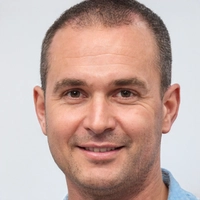Shockwave Therapy: What It Is, How It Works, and When It Helps
If you’ve heard about "shockwave therapy" but aren’t sure what it actually does, you’re not alone. In simple terms, it’s a non‑surgical treatment that uses high‑energy sound waves to stimulate tissue repair. Doctors use a handheld device that sends short bursts of acoustic energy into the body, and those pulses jump‑start the healing process.
How Shockwave Therapy Works
The magic happens at a microscopic level. The shockwaves create tiny micro‑traumas in the targeted area, which tells your cells to start rebuilding. This boost in blood flow brings more oxygen and nutrients, so tendons, muscles or even erectile tissue get the extra support they need. Because it’s an external device, there’s no cut, stitch or drug involved.
Common Uses and What to Expect
People most often turn to shockwave therapy for stubborn pain that hasn’t responded to rest or physiotherapy. That includes plantar fasciitis (heel pain), tennis elbow, shoulder tendinitis, and chronic knee pain. It’s also gaining popularity for erectile dysfunction and breaking up kidney stones in a procedure called lithotripsy.
A typical session lasts 5‑15 minutes, depending on the area being treated. You’ll lie down or sit comfortably while the practitioner moves the probe over the skin. Some folks feel a mild tapping sensation; others say it’s barely noticeable. Most patients need 3‑6 sessions spaced about a week apart to see real improvement.
Side effects are minimal. You might notice temporary redness, swelling or bruising where the waves hit, but these usually fade within a day or two. Because there’s no anesthesia or incisions, recovery time is almost zero—you can go back to work right after the appointment.
If you’re considering shockwave therapy, ask your doctor whether you’re a good candidate. It works best for chronic conditions that have lasted at least three months and haven’t responded to other treatments. People with blood clotting disorders, active infections or certain implants should avoid it.
Cost can vary widely. In the U.S., a single session might run $100‑$300, while some clinics offer package discounts. Insurance coverage is spotty; many insurers label it as “experimental,” so you may need to pay out‑of‑pocket.
One practical tip: stay hydrated before and after treatment. Good water intake supports the increased circulation that shockwaves create. Light stretching a day or two later can also help lock in the benefits without overloading the tissue.
Bottom line, shockwave therapy is a low‑risk option for people stuck with lingering pain or specific conditions like erectile dysfunction. It’s not a miracle cure, but many users report noticeable relief after completing the full course. Talk to a qualified practitioner, weigh the cost, and decide if the quick, drug‑free approach fits your health plan.


